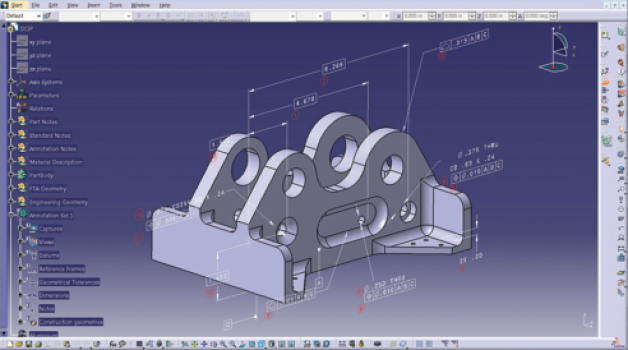Computer-Aided Engineering Software is in demand in the market but do you really need one? CAE software helps engineers model, design, manufacture, and analyze various products. It saves them time, cost, and effort by redesigning a product again and again. Instead, through CAE software, engineers figure out potential errors beforehand in the pre-processing and analyzing phase.
Computer-Aided Engineering Software comes in various types for different needs. So, which one should you go for? We have reviewed the best computer-aided engineering software so designers of all levels can find a suitable solution. Let’s learn about CAE software and compare different software now!
What we cover
Why Use Computer-Aided Engineering?
Computer-aided engineering software, as the name suggests, helps with product designing, testing, and development. Engineers and designers from various industries utilize CAE software for a wide range of applications.
Some of the applications of CAE include:
- Finite element analysis (FEA) for analyzing stress and dynamics.
- Computational fluid dynamics (CFD) for analyzing thermal and fluid properties.
- Electromagnetic simulation for analyzing electromagnetic field behavior.
- Multi-body dynamics simulation for vehicles. (such as kinematics)
- Mechanical event simulation (MES) such as water-resistance test and durability test.
Benefits of Computer-Aided Engineering Software
Let’s learn how you can benefit from computer-aided engineering software!
Performance Analysis
Through CAE software, engineers can analyze how a product will perform under various conditions. CAE uses mathematical modules as well as different tests to determine the product’s performance.
Engineers don’t have to create a physical prototype and can test a product’s physical properties through computer-aided engineering software.
Problem-Solving
CAE comes up with errors and problems within a product’s design, performance, and properties in the early stages. So, you save a lot of time due to CAE and can design a product keeping in mind the errors CAE detected in the initial design.
Cost-Saving
Once you design a physical prototype of any product, redesigning it requires a lot of effort and money. So, CAE saves a lot of cost in redesigning products.
In the preprocessing phase, engineers design a 3D model for the product. They can find errors in the design right at this stage by considering various environmental stresses through CAE software.
Next, they analyze their design and fix the potential errors. The audited design goes to the post-processing stage to come up with an optimum manufacturing method. This method is in accordance with the suggestions made by CAE software.
Fast and Easy Capabilities
Using CAE software, simulation testing has become easier and faster than ever. Even the most inexperienced users can quickly learn to operate CAE software and utilize it for testing their designs and products. Today’s CAE software not only helps you with error-solving but also aids in manufacturing the product in the best possible manner.
General Pricing
Usually, the price of computer-aided engineering software varies according to its features and your demands. Some high-end CAE software can cost around several thousand dollars per year whereas low-end software can fall within the several hundred dollar range.
The price of CAE depends on its type as well. CAE software comes in different types like electromagnetic analysis, MES, FEA, CFD, multi-body dynamics, etc.
The storage you require also determines its price. Some software have on-premise storage while others have cloud-based storage.
Some CAE software has price plans according to the number of users as well as the size of an organization. For example, if a student wants CAE software, it won’t cost them as much as it will cost an organization with various users.
How to Choose the Best Computer-Aided Engineering Software?
When we have so many options available in the market, it gets confusing to make the right choice. All the computer-aided engineering software can help you with your designs to some extent. But you need software that aligns with all your needs. And you can only do that when you know how to choose the best computer-aided engineering software.
Let’s check out some important factors to consider before making a decision!
Feature Set
The feature set of the CAE software you choose should match with your requirements. Consider your specific engineering needs and what kind of simulations you require from the software.
CAE software comes in different types for various applications. Do you need electromagnetic simulation or mechanical event simulation? You need to go through the applications your particular CAE software supports before getting it.
You can figure out which type of CAE software is better for your needs here!
Your Budget
CAE software can be expensive if you go for a high-end one. You have to choose software that falls under your budget but doesn’t lack any required features.
Scalability of the Software
In the early days, you might need only a handful of features from the software. But once you grow, you might need the software for large projects in all the phases of manufacturing.
At this point, if your previous software doesn’t have additional features or add-on options, it can be frustrating to switch. So, it is better to consider the potential of your work’s growth and then choose software that will meet your future needs as well.
Storage Options
CAE software usually comes in either on-premise or cloud-based storage. On-premise software uses its own models for storing your data and cloud-based software uses third-party storage.
Quality of Support
Finding a glitch in the software, getting stuck at a point, not being able to perform a specific function on the software – all these nightmares can be tackled if the customer support of the software is reliable. Check out the reviews and figure out the quality of support your desired CAE software provides before paying for it.
Best Computer-Aided Engineering Software
Best Computer-Aided Engineering Software (At a Glance – Top 4)
| Software | Compatibility | 3D Printing | Capabilities | Integrations |
| Fusion360 | Windows, Mac, iOS, Android | Available | CAD, CAM, CAE, and PCB | 14 Integrations |
| Inventor | Windows | Available | CAD, CAE, and CAM | CADTALK, OLE |
| Solid Edge | Windows, Mac, iOS, Android | Available | CAD, CAE, CAM, and PCB | Teamcenter, CADTALK |
| HyperWorks | Mac, Windows, Linux | Available | CAD, CAE, PCB | UberCloud, Altair Knowledge Hub |
Best Computer-Aided Engineering Software – Let’s Dive Deeper!
Let’s evaluate and compare some of the best computer-aided engineering software now so you can make the right choice!
1. Fusion360
Affordable CAE Software with advanced features is available online and offline.
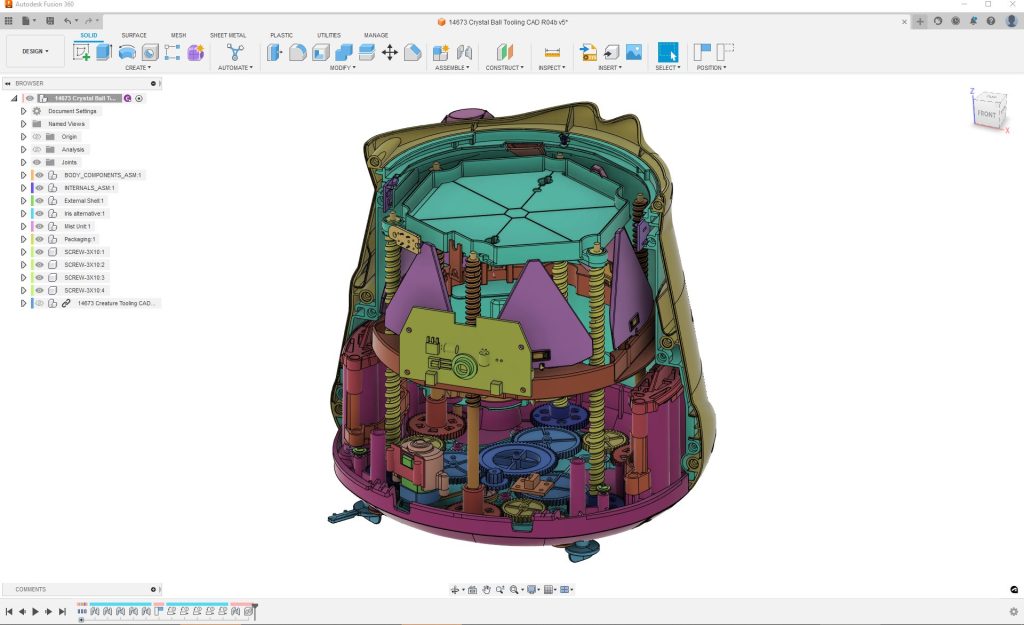
- Key Features: Compatible with Windows, MAC, iOS, and Android, CAM System, 30-Day Free Trial, 3D Models, Stress Testing, CNC ToolPaths.
- Pricing: $49/month, $382/year, or $1635 every 3 years.
- Pros: Advanced features at an affordable price, Available online and offline, Ability to create 3D models, Calculates and visualizes models efficiently, Easy to use, and contains friendly tutorials.
- Cons: A lot of extra buttons, Slows down due to heavy files, Constant updates.
- Ratings: 4.5/5
Reviews
Fusion360 is an affordable and cloud-based CAE software that solves complex computations as well as modeling problems.
Fusion360 has various features for designing, rendering, modeling, animating, and drafting your products. It is useful for all stages like preprocessing, analysis, and post-processing.
Best thing about Fusion360:
It has a wide range of tutorials to help engineers understand the software and its full advantage. These tutorials are available on their website as well as the Autodesk website.
You can also access these tutorials on this Autodesk Fusion YouTube channel.
By inputting data, Fusion360 helps you visualize your product before it is made. This gives you an idea of which areas to improve.
You can create both 2D images and 3D renderings through Fusion360. It brings all your ideas to reality with comparatively less effort.
Its embedded CAM system makes the manufacturing process easier than ever by automating every step.
Verdict: Both professional and amateur engineers can get advantages through Fusion360 at an affordable rate for designing, manufacturing, and engineering with a lot of automated features.
2. Simscale
Combo of open-source and cloud-based simulation software with advanced features at an affordable rate.
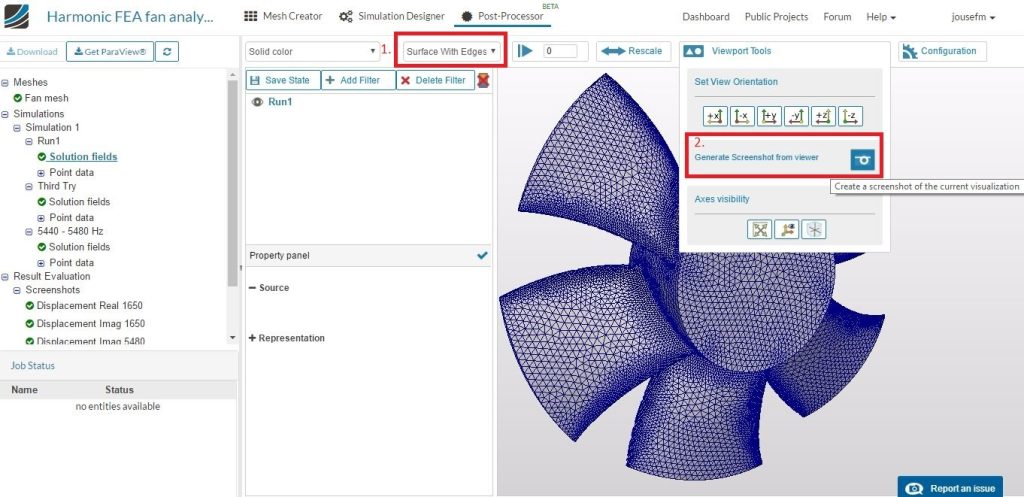
- Key Features: Free-trial Available, Usage of up to 96 Cores Machines, Open-Source + Cloud-Based, License Flexibility.
- Pricing: On-demand price on their website.
- Pros: Provides a lot of freedom to users, Straightforward interface, Excellent customer support, Fast and inexpensive, Useful tutorials and work examples.
- Cons: Importing assemblies from other software is hard and lacks explanations in the CFD area.
- Ratings: 4.9/5
Reviews
Simscale is a cloud-based simulation software to perform various CAE-related tasks such as CFD, thermal simulation, and FEA.
You can test the performance of a product in the early stage in a rough manner to determine where necessary changes are required. It uses physics capabilities to conduct thorough testing in the later stages to finalize your product.
They aim to create a platform that is both user-friendly and contains advanced features. This way, designers and engineers of all levels can use the simulation software.
The elastic-cloud feature of Simscale allows the use of multiple simulations at once to test the product’s performance on an advanced level.
They have a flexible price plan that caters to the needs of engineers of every level. Whether you are a student or run a large organization, you can find a suitable plan that aligns with your budget.
Verdict: Perfect CAE software for all levels of engineers and designers looking for advanced features for high-end products and a user-friendly interface in an affordable price range.
3. Inventor
Inventor by Autodesk – Loaded with advanced features and best for CAE designing and manufacturing on Windows.
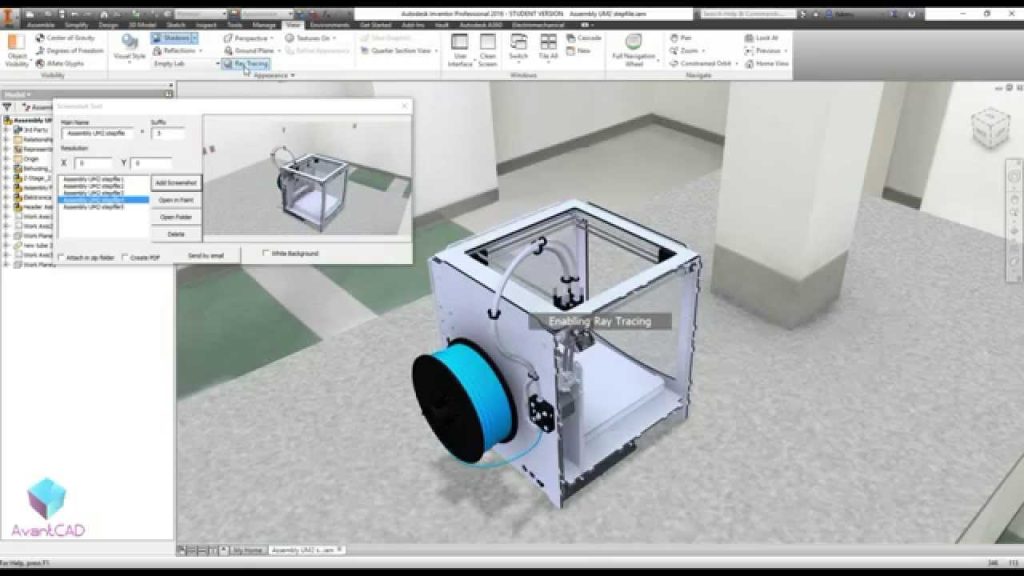
- Key Features: Model-Based Designs, Sheet Metal, BIM Interoperability, Compatible with Windows, Integrates with Vault PLM, Free-Trial Available.
- Pricing: $290/month, $2300/year, or $6900 every 3 years.
- Pros: Easy and realistic designs for all industries, customization available, 2D and 3D Modeling, and Product Visualizations.
- Cons: Copy with mates feature missing, Large file sizes, Requires a powerful PC.
- Ratings: 4.5/5
Reviews
Inventor by Autodesk helps you create professional-grade designs by performing various tests on the products. You can visualize, simulate, mechanically design with 3D tools, and also document your products.
With the shared-view collaboration tool, various users can work on the same project simultaneously. This saves a lot of time and provides real-life work experience.
With the shape generator on Inventor, you can create different styles and shapes and add them to your model in no time. Such automated tools save users a lot of effort.
Best thing about Inventor:
You can open different models created on other software without any translations. This allows you to form more creative designs in less time.
Not to forget how Inventor allows 3D model designing for all levels of designers. Their intuitive and user-friendly interface is praise-worthy as it helps even beginner engineers to form and test their products efficiently.
Verdict: Autodesk Inventor comes in two forms one of which is for professionals with added modeling tools while the other is for less-experienced engineers with all the necessary features. So, all levels of engineers can use Inventor for product modeling, designing, manufacturing, and toolmaking on Windows devices.
Check out Inventor by Autodesk here!
4. Solid Edge
Affordable CAE tool with advanced features for beginners and professionals.
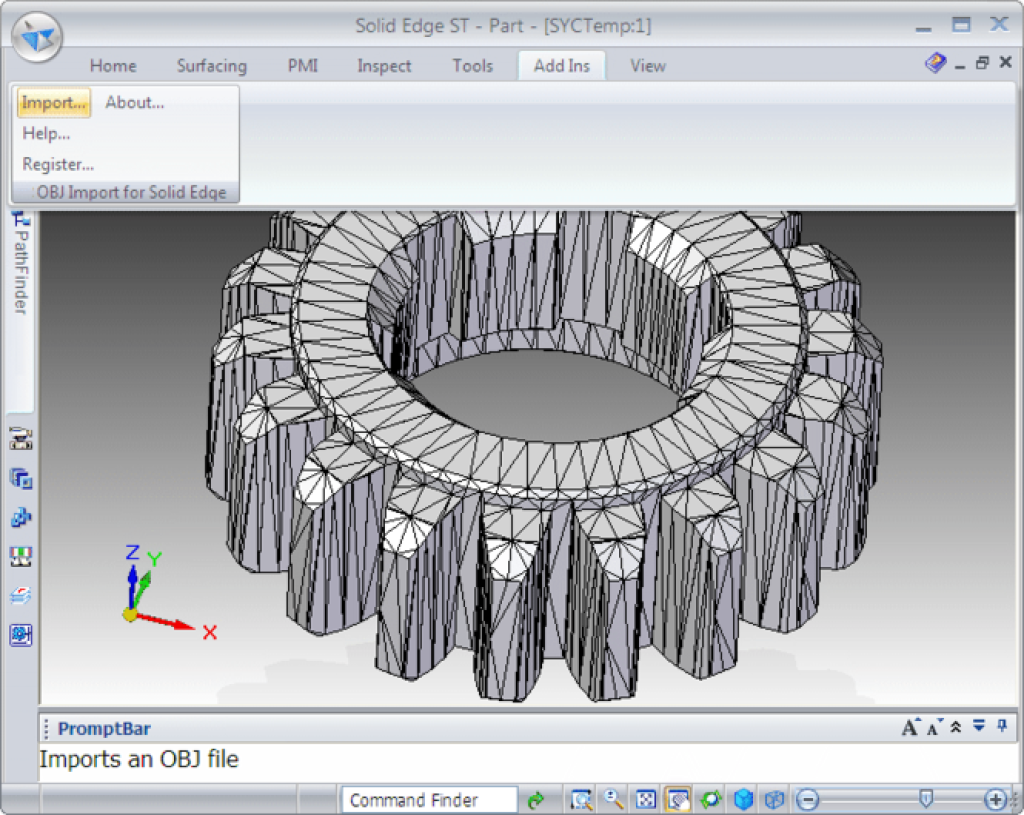
- Key Features: 30-Day Free Trial, 3D Documents, Good Integrations, Video Fly-Throughs, Calculations and Analysis of Design.
- Pricing: Various price plans for different products such as monthly, annual, and license subscriptions.
- Pros: Amazing analysis for avoiding errors, Great customer support, Highly scalable, Easy to use for all levels of users.
- Cons: Requires powerful PC, Expensive for some users.
- Ratings: 4.5/5
Review
Solid Edge is a suite of products for designing, manufacturing, 2D drafting, 3D CAD, harness designing, and 3D publishing. The products come in various ranges such as for students, start-ups, teachers, free trials, community, etc.
Their drag-and-drop inspired movement of parts in 3D assembly design makes it easy and quick for all users to operate. This adds to their highly user-friendly interface. You can also take references while sketching through the design software.
The best thing about Solid Edge is its customization. You can customize which tools you want to be displayed on the front so you can access them fast.
The quality of models made through Solid Edge is always high-quality with rigorous simulation testing so there are no errors left behind.
It is a cloud-based software and you get ample storage to keep all your designs in a safe place.
Verdict: Suitable for students, organizations, and professionals – Solid Edge caters to all your needs with its suite of products for both 2D and 3D models, drafting, assembly design, publishing, etc.
5. HyperWorks
Best CAE Software for all design and engineering needs.
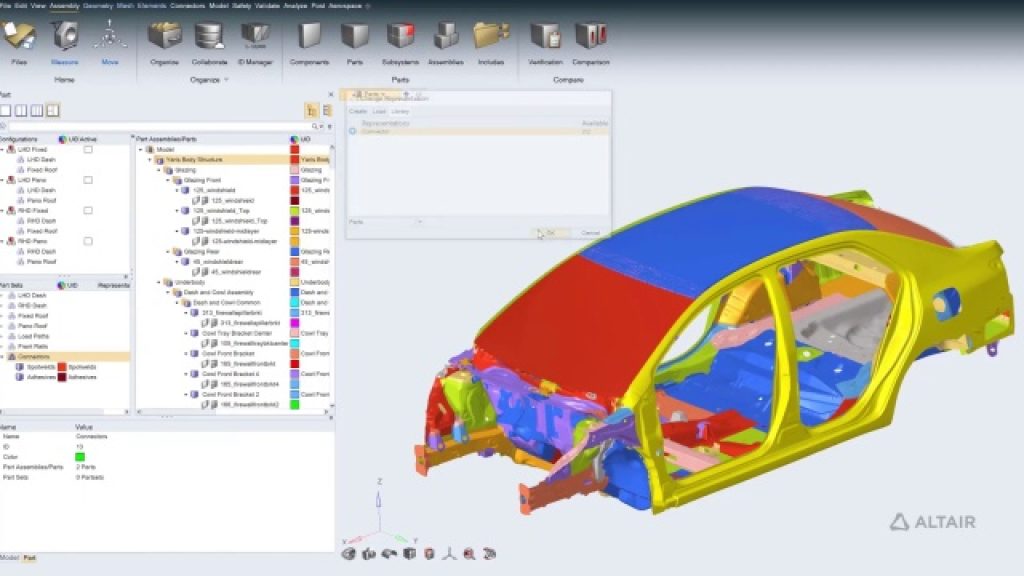
- Key Features: 2D and 3D Models, Management of Geometric Holes, FEA Meshing, Compatible with MacOS, Windows, and Linux.
- Pricing: On-demand price.
- Pros: Can create custom templates and save them, Reliable results for errors, Compatible with other software, Advanced features, Amazing user-friendly interface
- Cons: Lacks tutorials, and Crashing problems.
- Ratings: 4.2/5
Review
Hyperflow provides an efficient and streamlined workflow to enhance overall team productivity. For intricate and modern products, Hyperflow streamlines their development by using different automation tools.
You can transition through different domains on Hyperworks and can get reports as well. You enhance, craft, and investigate the product and its performance through Hyperworks. It analyzes various aspects of products such as structure, fluids, system designs, suitable manufacturing methods, electrical systems, etc.
The intuitive user interface caters to every individual’s needs and gives them a customized experience to get the best experience.
Verdict: Perfect for beginners, amateurs, and organizations to streamline their workflow at an affordable price.
6. Comsol
High-end CAE Software for Medium to Large Projects with Helpful Tutorials Available.
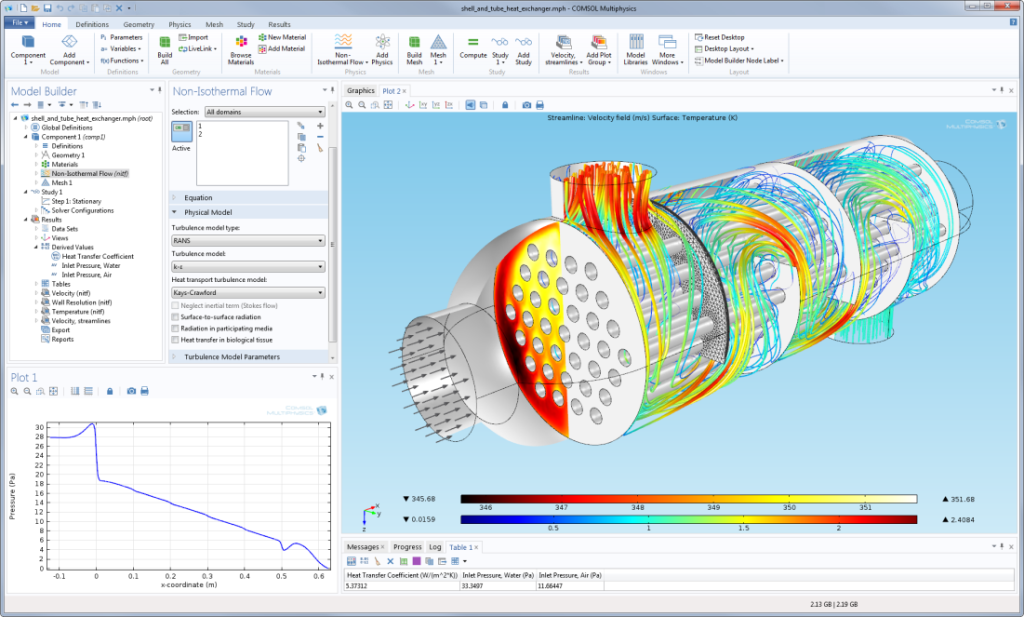
- Key Features: Multiphysics and Single-Physics, Add-on Modules, FEA Physics Simulations, Seamless Integration with CAD Import Module, LiveLink, etc., 64 Bit Meshing and Solving Tech, 2-way MATLAB Script Interface.
- Pricing: $4,000 base license cost
- Pros: Individual and business licenses available, Helpful for designing geometric shapes, Flexible and customizable interface, Helpful tutorials available
- Cons: Takes a large amount of computing power, Overwhelming amount of features can be difficult to manage for some users.
- Ratings: 4.6/5
Review
Comsol is one of the best CAE software for solving complex equations for science and engineering. It performs complex simulations giving real-world experience.
It has the most advanced features that even high-grade professional engineers can find useful. Comsol provides an intensive training program so the users can utilize all the features of the software.
It performs exceptional MES to execute different tests to analyze the performance of the products. This saves costs, time, and energy. The software provides effective tools for all industries such as aviation, automotive, research, industrial engineering, mechanical engineering, etc.
It’s multiphysics and single physics features such as defining geometrics, evaluating results, performing computations, etc.
Its powerful FE analysis tools help engineers handle complex structures efficiently.
Verdict: Suitable for professional-level engineers for handling, manufacturing, evaluating, and designing complex products with real-time experimentation experience.
7. Ansys
Advanced multiphysics simulations for experienced engineers and designers.
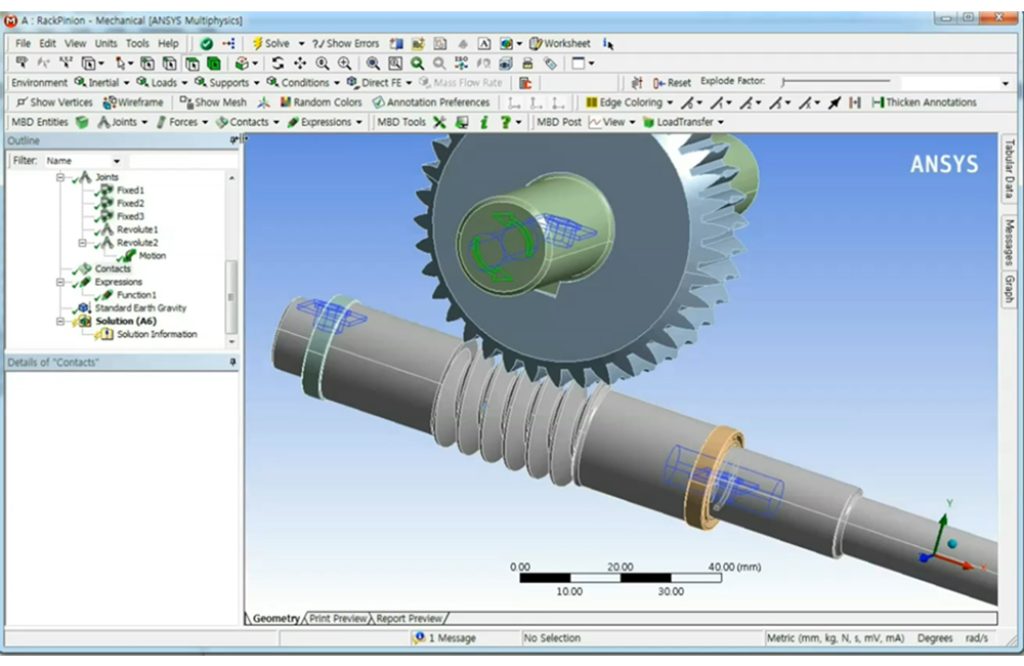
- Key Features: Fast Multiphysics Simulations, FEA Analysis, Compatible on Windows, High-Fidelity Models.
- Pricing: On-request price only.
- Pros: Tools for automating calculations, In-depth mesh study, Good customer support, Flexible functions
- Cons: Frequent updates, Hard to use for beginners.
- Ratings: 4.3/5
Review
Ansys comes with various advanced features for product development, engineering simulations, and computational solutions. Ansys Mechanical is particularly designed for efficient structural analysis with tests for acoustic analysis, fatigue analysis, etc.
The highly customizable interface attracts users of all tech levels. You can place all your desired features in the menus and layouts to make your work faster and easier.
The seamless third-party integrations on Ansys are remarkable as you can export files from other CAD software on it. It also integrates with modules designed for bettering the products such as material modeling.
Other simulations supported by Ansys include electromagnetic simulations, system simulation, and fluid dynamics (fluid flow).
Learn how to use Ansys in these video tutorials!
Verdict: Suitable for most challenging projects with highly scalable design and simulation tools. Beginners can find Ansys useful too by going through a course or several tutorials. (given above)
8. AGX Dynamics
SDK for real-time multibody simulation for experienced engineers.
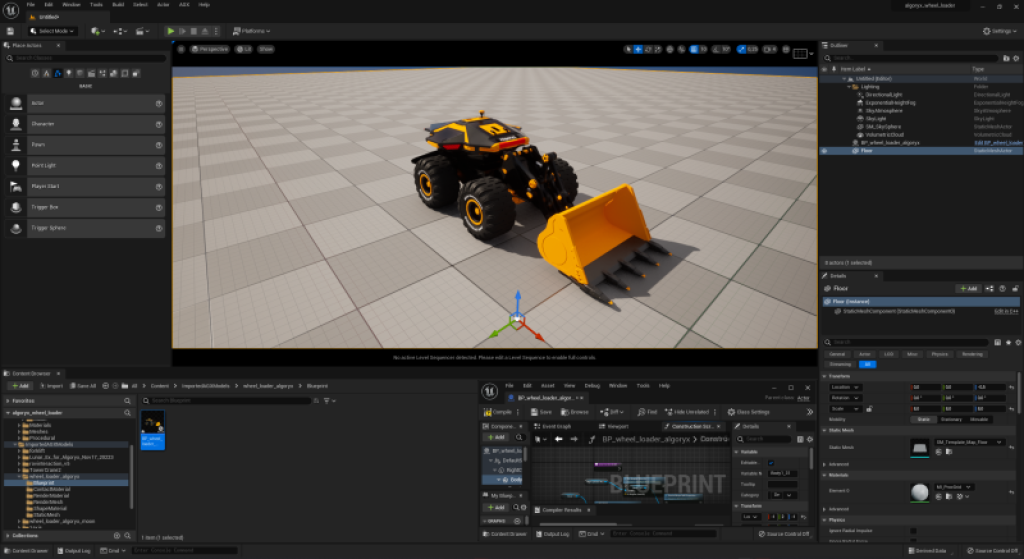
- Key Features: Motion Dynamics, Frictional Analysis, Simulink Export Functions, Automatic Contact Detection and Reduction, Compatible with MacOS and Windows.
- Pricing: Free trial available. On-demand price plans.
- Pros: Creation of whole environment for powerful simulations, Video tutorials available, Good value for money.
- Cons: Hard to use for some users.
- Ratings: 4/5
Review
AGX Dynamics is a software development kit aimed at virtual reality (VR). It has physics simulation tools for manufacturing and designing VR training material.
You can create a whole environment through AGX Dynamics instead of forming a single product. This provides a real-time experience to the product to analyze its performance to the fullest.
It provides information on a macro level to reduce as many errors in the product as possible. Simulations like motion dynamics and frictional analysis help with this.
Integrations with various CAD software and modules make AGX Dynamics a complete solution for engineers of all levels.
Verdict: Perfect for easy full-system simulations and optimizing VR training material. Supports the manufacture and design of heavy projects and large robots, cranes, and machinery. Beginners will require training and tutorials to find it useful.
9. Siemens
Flexible CAD and CAM tools for engineers and designers with next-generation design features.
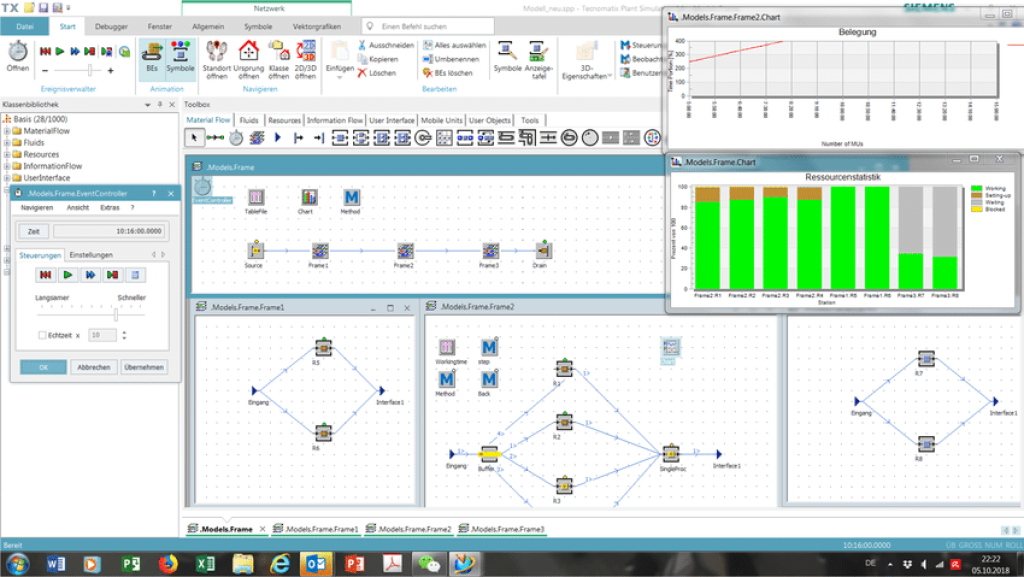
- Key Features: Model-based Definition, 3D Modeling, AR and VR Visualizations, Electronic Design Collaboration, Notifications for Multi-User, Compatible with Linux and Windows.
- Pricing: $119-$559/month depending on the product.
- Pros: Amazing collaboration tools, Seamless integrations, Advanced simulations with a wide range, and Photo-realistic visualizations.
- Cons: Not available on Mac, can be tricky to use sometimes.
- Ratings: 4.5/5
Review
Siemens helps develop, design, and optimize complex products with various simulations like thermal and fluid analysis, static analysis, dynamic analysis, acoustic analysis, fatigue analysis, etc.
The 3D CAD tools of Siemens make 3D modeling easier than ever. These tools include surface modeling, drawing, lofting, sweeping, etc. 3D printing is also available on Siemens for additive manufacturing.
You can operate photo-realistic visualizations before forming the product. Both AR and VR visualizations are available. The software checks for errors and provides solutions through various simulations. This saves engineers a lot of time, cost, and effort.
You can work with various members on the same design simultaneously through the collaboration tools available on Siemens. It makes group projects fast and effective.
Verdict: Siemens is easy to operate for beginners after going through a few tutorials. Experienced engineers find Siemens useful in various industries for 3D modeling, designing, visualizations, and simulations.
10. Catia
High-end CAD software with CAE and CAM tools for various industrial product design and manufacturing.
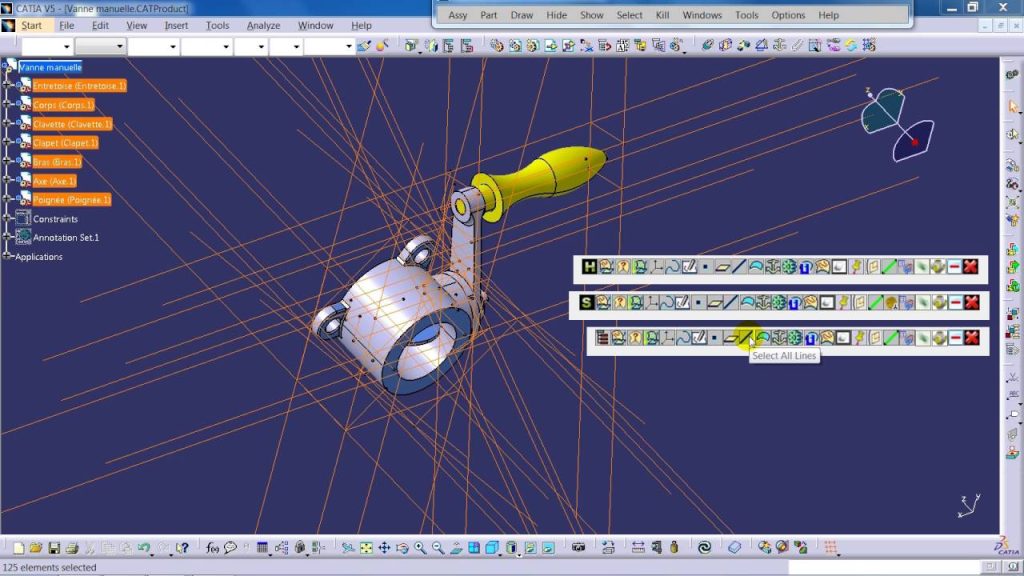
- Key Features: 3D Experience, Social Design Environment, Product and Surface Modeling, 3D Printing, Compatible with Mac, Windows, and Linux, Global Collaboration
- Pricing: On-demand price plans.
- Pros: Amazing collaboration tools to work on the same project, Realistic environment designing, Flexible for various industries, CAM, CAD, and CAE – all tools available.
- Cons: Not user-friendly, Expensive for some users, Complicated mouse functions.
- Ratings: 4.4/5
Review
Catia is a suite of products for CAM, CAD, and CAE focusing majorly on CAD tools for industries like automotive and aerospace.
It consists of simulation tools for evaluating parts of a model and designing, and manufacturing the model effortlessly.
Its realistic capabilities allow engineers to form whole environment systems for a product so they can analyze all the possible errors and outcomes.
The 3D CAD designing available by Catia helps designers form shapes, geometries, and structures for their models.
Catia streamlines the process of implementing various analyses and adoptions. Its report plans spread the results across the whole organization so everyone can evaluate the product’s performance.
Verdict: Catia is suitable for CAD designing models with realistic environments, CAM and CAE tools for analyzing the performance of the model, and for 3D designing for experienced designers and engineers belonging to various industries (robotics, automotive, aerospace, etc).

